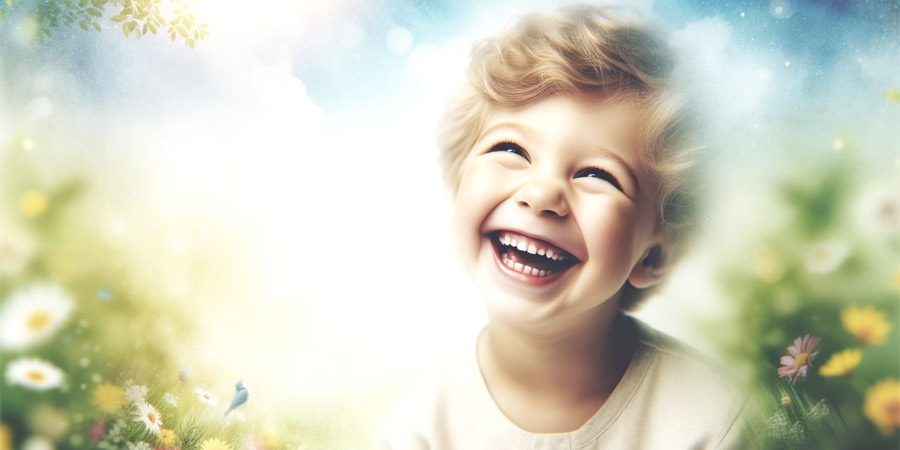Table of Contents
When we exhibit immaturity, we often justify it with “the child in us,” probably hoping everything will be forgiven, just as we forgive children.
Children always rush to grow up to taste the freedom of making decisions. Still, once they don the adult’s suit, they realize that the size of the body outpaces the readiness to take on responsibility and, often, the ability to have healthy relationships with others.
Where is the inner child?
Every one of us has it.
If you have ever visited a psychologist, they most likely sought the cause of your problems by exploring your childhood, identifying the patterns you repeat, and inevitably dealing with “your inner child.”
It is a subconscious part that arises right after conception. It perceives everything that happens, even before we can understand it (mentally or emotionally).
This vital part of us stores emotions, beliefs, memories from the past, and dreams for the future.
When does the inner child manifest?
- With the memory of the aroma of just-baked cookies by Grandma.
- With the memory of someone mocking us in school when we were little.
- With the memory of an always absent father.
- With the memory of fear when the teacher called us in front of the class.
- When we start a new job and are proud of ourselves.
- When, as teenagers, we desperately wanted to be in an excellent group.
- When we fall in love.
- It’s cozy, comfortable, and fun when we feel great with other people.
- When someone betrays us, we feel hurt and lied to.

The child in us constantly communicates with us. Once we are aware of this innocent version of ourselves, we become vigilant for it and start to listen because it is our true self before layers of imposed beliefs accumulate.
Does the inner child suffer?
Emotions are our navigational system, showing us what’s not right.
Some symptoms that our inner child is traumatized include:
- Self-sabotage,
- Tendency towards addictions (gambling, drugs, alcohol, sex, television, food, etc.),
- Striving for perfectionism, inability to handle failure,
- Anxiety and fear as usual states,
- Constant self-disapproval and self-criticism, regardless of our achievements,
- Inability to stay in the present moment (not being in our body),
- Workaholism, constant busyness,
- Feelings of shame, fear, guilt, etc.
A symptom could be if we have problematic relationships with others, if we can’t organize our time, or if we can’t regulate our emotions ourselves. All of these are signals of unhealed traumas, and the path to our inner child is the first direction we need to take.
When we notice that we are anxious, afraid, falling into perfectionism, or avoiding certain people and situations, it means the child in us is seeking safety and security.
In such moments, it acts as a first signal, basing its behavior and decisions on certain beliefs, memories from the past, and fantasies (illusions); it does everything to bring a sense of safety.
The adult feels unhealed childhood traumas are a considerable burden. When the inner child has lived in instability, insecurity, or danger, it can prevent changes from entering life because it fears the new.
To restore balance, gaining maturity, flexibility, confidence, perseverance, and responsibility is necessary. It’s essential to connect with our inner child, to become its best friend and protector until its emotional needs are met.
How do we create a connection with our inner child?
It’s necessary first – to start a dialogue with it and second – to listen to its needs, desires, and dreams and, most importantly – to take action to fulfill them.
There are many ways to be a support and a safe environment for our inner child. It might want to express anger because of some injustice, cry over a memory, or share a deeply kept secret.
In all cases, if our creativity is blocked, the solution lies in our inner child. When we silence its voice, we deny whole parts of ourselves.
Once we restore the connection with our inner child, it “knows” that it’s not abandoned and has our support and will start to reveal itself more and more.
Working with the inner child is especially important after traumatic events, such as the loss of a loved one, physical and sexual abuse, neglectful, sadistic, narcissistic, emotionally unavailable parents, etc.
It’s necessary to provide it with a safe environment – emotional or physical, to take actions, like establishing new boundaries with the respective people and situations that have hurt it in the past, to gain the confidence to start stating its needs boldly.
The Happy Inner Child
Healing from past events, honoring our inner child, and celebrating and accepting it are ways to love ourselves and be conscious parents to our children, preventing the transmission of our traumas from one generation to the next.
Successful, calm, and happy people have integrated their inner child. They have made it a part of their being, their sensations, keeping it in mind when making all critical decisions. Successful people are emotionally regulated and balanced, with harmonious relationships and inner peace.
A happy inner child is eager to try new things – that’s how you’ll recognize it. You’ll know it’s comfortable, even when disappointed, by how it handles failures. It can withstand insults and won’t feel guilt, fear, or shame for things that previously had a strong negative impact.
A happy inner child won’t act impulsively or seek others’ approval. It won’t feel obligated to its parents and won’t be afraid to tell them what it thinks. The carefree creator wakes up with a smile, just as young children broadly smile each morning when they wake up.

